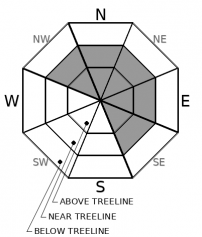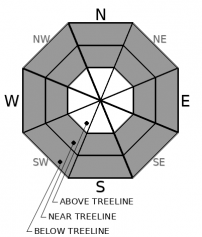| Thursday | Thursday Night | Friday | |
|---|---|---|---|
| Weather: | Mostly cloudy. Chance of snow showers through the day. An isolated thunderstorm is possible in the afternoon. Snow levels below 7000 feet. Chance of precipitation is 55%. | Mostly cloudy. Chance of snow showers. Snow levels below 7000 feet. Chance of precipitation is 35%. | Partly cloudy. Snow levels below 7000 feet. Chance of precipitation is 5%. |
| Temperatures: | 33 to 39 deg. F. | 17 to 22 deg. F. | 37 to 43 deg. F. |
| Mid Slope Winds: | Southwest 15 to 25 mph with gusts to 35 mph. | Southwest 15 to 20 mph. Gusts up to 30 mph. | West less than 10 mph. |
| Expected snowfall: | 60% probability 1-2 inches. 40% probability no accumulation. | SWE = less than 0.10 inch. | 70% probability no accumulation. 30% probability 1-2 inches | SWE = less than 0.10 inch. | No accumulation. | SWE = none. |
| Thursday | Thursday Night | Friday | |
|---|---|---|---|
| Weather: | Mostly cloudy. Chance of snow showers through the day. An isolated thunderstorm is possible in the afternoon. Snow levels below 7000 feet. Chance of precipitation is 55%. | Mostly cloudy then becoming partly cloudy. Chance of snow showers. Snow levels below 7000 feet. Chance of precipitation is 40%. | Partly cloudy. Snow levels below 7000 feet. Chance of precipitation is 5%. |
| Temperatures: | 28 to 34 deg. F. | 14 to 19 deg. F. | 30 to 36 deg. F. |
| Ridge Top Winds: | Southwest 20 to 35 mph with gusts up to 60 mph. | Southwest 15 to 30 mph. Gusts up to 50 mph decreasing to 40 mph after midnight. | West 10 to 15 mph. |
| Expected snowfall: | 60% probability 1-2 inches. 40% probability no accumulation. | SWE = less than 0.10 inch. | 70% probability no accumulation. 30% probability up to 2 inches. | SWE = less than 0.10 inch. | No accumulation. | SWE = none. |



























